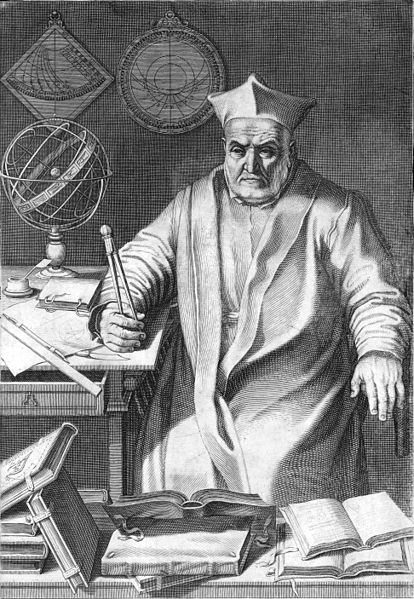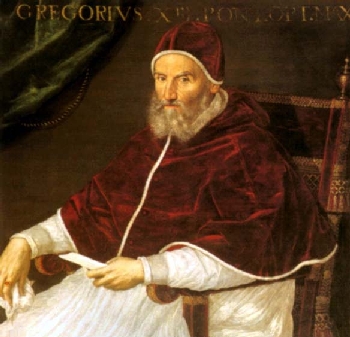- About MAA
- Membership
- MAA Publications
- Periodicals
- Blogs
- MAA Book Series
- MAA Press (an imprint of the AMS)
- MAA Notes
- MAA Reviews
- Mathematical Communication
- Information for Libraries
- Author Resources
- Advertise with MAA
- Meetings
- Competitions
- Programs
- Communities
- MAA Sections
- SIGMAA
- MAA Connect
- Students
- MAA Awards
- Awards Booklets
- Writing Awards
- Teaching Awards
- Service Awards
- Research Awards
- Lecture Awards
- Putnam Competition Individual and Team Winners
- D. E. Shaw Group AMC 8 Awards & Certificates
- Maryam Mirzakhani AMC 10 A Awards & Certificates
- Two Sigma AMC 10 B Awards & Certificates
- Jane Street AMC 12 A Awards & Certificates
- Akamai AMC 12 B Awards & Certificates
- High School Teachers
- News
You are here
Servois' 1813 Perpetual Calendar, with an English Translation - A Brief History of Calendars
`
Throughout history, there have been many attempts at creating calendars. Some early systematic endeavors were made by the ancient Babylonians, Chinese, and Egyptians. The Babylonians (ca. 1900–1600 BCE) had a lunar calendar with 12 months, which alternated between lengths of 29 and 30 days [Richards 1998], and they approximated the length of a year to be 365 days, 6 hours, and 11 minutes [Smith 1953]. The Babylonian calendar went through several reforms, but survived until the rise of Islam in the seventh century [Richards 1998]. Astronomy and the creation of calendars also were of great importance in China and East Asia. According to Smith [1953], Chinese calendars changed significantly depending on the Emperor at the time. However, as early as the Shang Dynasty (1600 BCE), most Chinese believed that the mean length of a year was 365.25 days [Richards 1998]. The ancient Egyptians had a calendar that consisted of 12 months of 30 days each, and five extra days added at the end of the year [Dershowitz and Reingold 1997]. Like those of the Babylonians and of the Chinese, the Egyptian calendar went through several reforms.
David Eugene Smith, in his classic History of Mathematics [1953], stated that the oldest Roman calendar was probably created in about 753 BCE, supposedly by Romulus, the legendary founder of Rome. This calendar had a year of about 304 days divided into ten months of varying lengths, with each year beginning with the month of March. The legend continued with Numa Pompilius, Romulus' successor as King of Rome, who added the months of January and February to this calendar in about 713 BCE, and declared that each year would begin on January 1.

Figure 2. The Tusculum Portrait of Julius Caesar, photograph by Tataryn 77. (Picture and data courtesy of the Yorck Project, under Creative Commons Attribution-Share-Alike License.)
According to Richards [1998], the Decemvirs, a committee in charge of writing laws for the Roman Republic, made reforms to the intercalation process (insertion of leap days) for the Roman calendar in 450 BCE, the administration of which was given to the priests, who kept the process secret [Smith 1953]. However, this matter soon became a political competition which caused the process to become disorganized [Richards 1998]. By the time of Julius Caesar, this mismanagement had caused the Roman calendar to be eighty days out of its astronomical place [Smith 1953]. Due to this error, astronomers under Caesar's administration created the so-called Julian calendar, which was implemented in 46 BCE. It was declared that the year 46 BCE was to have 445 days. However, every year thereafter would have months of fixed lengths, where one year had 365 days divided into 12 months, and every fourth year was a leap year with 366 days. Caesar's original calendar began in March, but he later decided to move the beginning of the year to January 1, a return to the practice in Pompilius' calendar. Additionally, he changed the names of several months, such as Quintilis to Julius (July was Caesar's birth month) [Smith 1953]. After Caesar's death, confusion arose among the priests regarding Caesar's orders as to when the next leap year would occur [Smith 1953]. Gaius Octavius Thurinus, more commonly known as Augustus Caesar, corrected this error in 9 BCE by omitting the next three leap years, whence there would be no leap year observed until 8 CE [Richards 1998]. In Augustus' honor, the summer month, which the Romans called Sextilis, was renamed August after him [Smith 1953]. The Julian calendar was a solar calendar [Norby 2000] and had a mean of 365.25 days.

Figure 3. Christopher Clavius. Painting by Francisco Villamena (1566–1624) (public domain).
The Julian Reform did not solve all of the problems with the calendar, because the mean number of days per year is not 365.25 days. Actually, it is about 11 minutes and 14 seconds shorter [Smith 1953]. This over-estimate led to the vernal equinox slipping by about a day every 128 years during the Julian period [Norby 2000] and this error became very apparent by the end of the fourteenth century. Finally, in order to rectify this issue, Pope Gregory XIII, along with the mathematicians Christopher Clavius (1538-1612) and Aloysius Lilius (ca. 1510-1576), created the Gregorian Calendar. This calendar was established in October 1582, when Gregory decreed that October 4 of 1582 would be immediately followed by October 15 [Norby 2000]. To compensate for the error in approximating the vernal equinox, Gregory instituted the 100 years and 400 years rule. The rule – namely, “Each year which is divisible by 4 but not by 100 and each year which is divisible by 400 is a leap year with 366 days. All other years contain 365 days” [Morris 1921, p. 127] – gives a mean year of approximately 365.24 days and would require no further adjustment for about 3000 years [Smith 1953].

Figure 4. Pope Gregory XIII. Painting by Lavinia Fontana (1552–1614) (public domain).
The purpose of the present article is to focus on a perpetual calendar created in 1813. Therefore, our brief journey through the history of calendars ends here. Readers interested in a more detailed account of the history of the calendar can refer to Smith [1953], Richards [1998], and Tondering [2012]. Now, we turn to the concept of a perpetual calendar.
A perpetual calendar, also known as a "forever calendar," is a compact and efficient calendar which is intended to be accurate and require no adjustments for many years. This seems to be a vague definition; however, a perpetual calendar's lifespan is determined by its creator. Perpetual calendars date as far back as the Julian era.
Perpetual calendars can come in many different flavors. For instance, there are perpetual calendars that require the user to know on which day of the week January 1 falls. There are also calendars, such as the one we will discuss, that require no special auxiliary information. Perpetual calendars that require little or no information seem great at face value; however, their downfall is that they are not efficient for everyday use. That is to say, if a specific perpetual calendar requires you to begin with very little information, then that calendar will involve more calculations for its use.
According to Richards [1998], the Gregorian calendar had one element that almost everyone disliked: the fact that there are no fewer than 14 different calendars required to deal with the distribution of days in the week and leap years. Thus, there seemed to be no way to create an “efficient" perpetual calendar under the Gregorian Reform. Despite this fact, many individuals still create perpetual calendars to this day.
Salvatore J. Petrilli, Jr. (Adelphi University), "Servois' 1813 Perpetual Calendar, with an English Translation - A Brief History of Calendars," Convergence (June 2012), DOI:10.4169/loci003884




